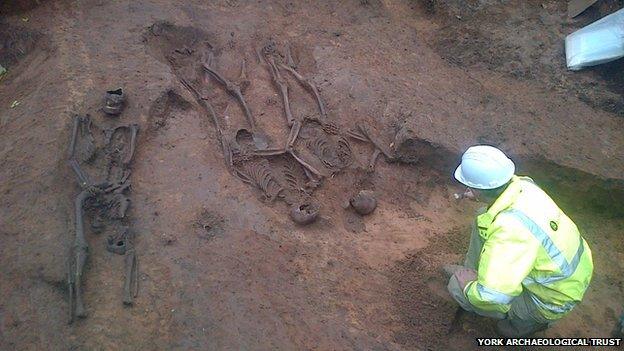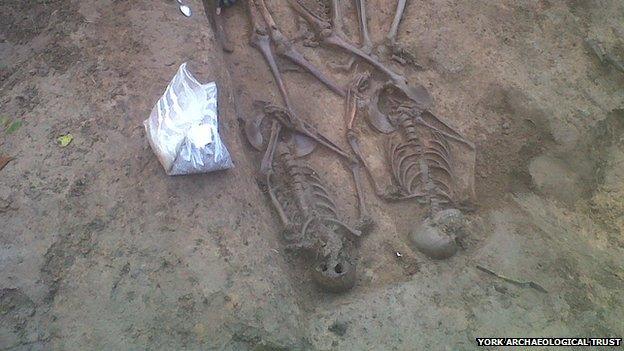York power work reveals medieval burials
- Published

The remains were all male and could have been professional soldiers or criminals
A group of 12 skeletons, uncovered during power work in York, have been dated back to the War of the Roses.
The first bones were found as Northern Powergrid replaced underground cables in the Knavesmire area in November 2013.
York Archaeological Trust said radiocarbon dating of two of them suggested they had died in the 1460s.
The trust said the men could have been soldiers or criminals executed at the nearby Tyburn.
'Fascinating find'
Following the discovery of the first skeleton, further excavations in two trenches revealed all 12 remains.
All were male and had been aged between 25 and 40 at the time of their death.

The skeletons were uncovered near the city's Tyburn, the site where criminals were executed until the 19th century

Experts said some of the remains had evidence of bone fractures

One of the skeletons is expected to go on display at the city's Monk Bar museum in March
Two have evidence of significant bone fractures which archaeologists said could be evidence of fighting, perhaps associated with professional soldiers.
Ruth Whyte, osteo-archaeologist for York Archaeological Trust said: "We knew this was a fascinating find as, unlike 15th century Christian burial practice, the skeletons were all together and weren't facing east-west.
"The Knavesmire was the site of York's Tyburn, where convicted criminals were executed right up until 1802. Were these individuals criminals or could they have been Lancastrian soldiers?
"They may have been captured in battle and brought to York for execution, possibly in the aftermath of the Battle of Towton during the Wars of the Roses, and their remains hastily buried near the gallows."
The Battle of Towton, fought on 29 March 1461, saw the Lancastrian forces of Henry VI defeated by those of Edward of York who became King Edward IV, the older brother of Richard III.
The battle location is nine miles (14km) from York.
- Published5 December 2013

- Published7 June 2010